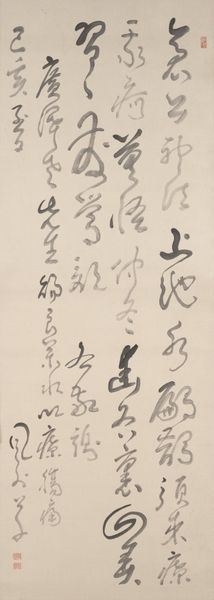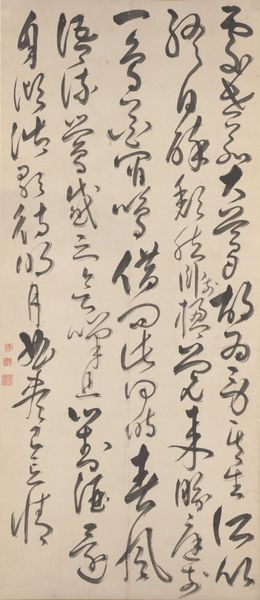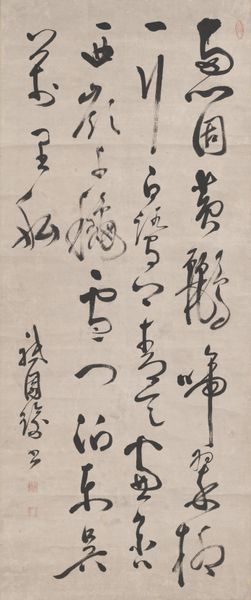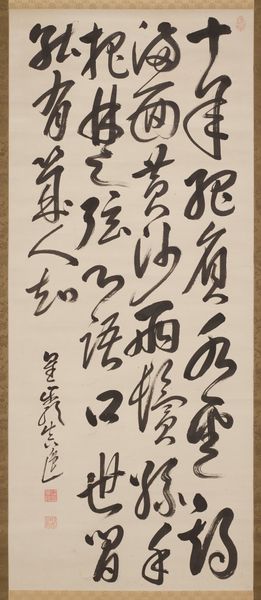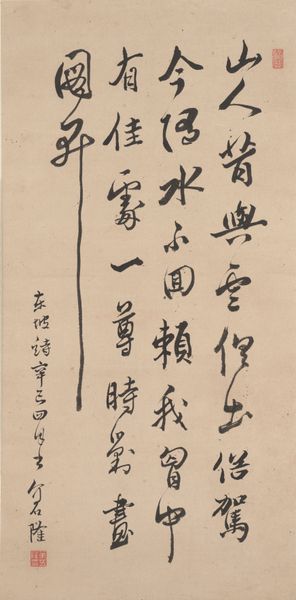
drawing, paper, ink-on-paper, hanging-scroll, ink, pen
#
drawing
#
hand-lettering
#
asian-art
#
hand drawn type
#
hand lettering
#
japan
#
paper
#
ink-on-paper
#
hanging-scroll
#
ink
#
pen work
#
pen
#
calligraphy
Dimensions: 52 7/8 × 19 3/4 in. (134.3 × 50.17 cm) (image)90 5/8 × 25 5/16 in. (230.19 × 64.29 cm) (mount, without roller)
Copyright: Public Domain
Matsumoto Koryū made this hanging scroll in Japan using ink on paper. Koryū’s calligraphic interpretation of the poem creates a visual landscape on the scroll. The brushstrokes dance across the surface, embodying the poem’s essence through their dynamic forms. Calligraphy, elevated to an art form, held a vital role in Japanese society, particularly within Zen Buddhism and the imperial court. This work reflects a deep connection to nature, a common theme in Japanese art, mirroring the cultural emphasis on harmony between humans and the natural world. The act of calligraphy itself was a meditative practice, seen as a means of self-cultivation. It also served as a marker of social status, showcasing the artist’s education and refinement. By exploring period texts, scholarly articles, and exhibition catalogs, we can gain a deeper understanding of the social and institutional contexts of the work and the artist. It is a reminder that art's meaning evolves with the perspectives and contexts we bring to it.
Comments
No comments
Be the first to comment and join the conversation on the ultimate creative platform.

